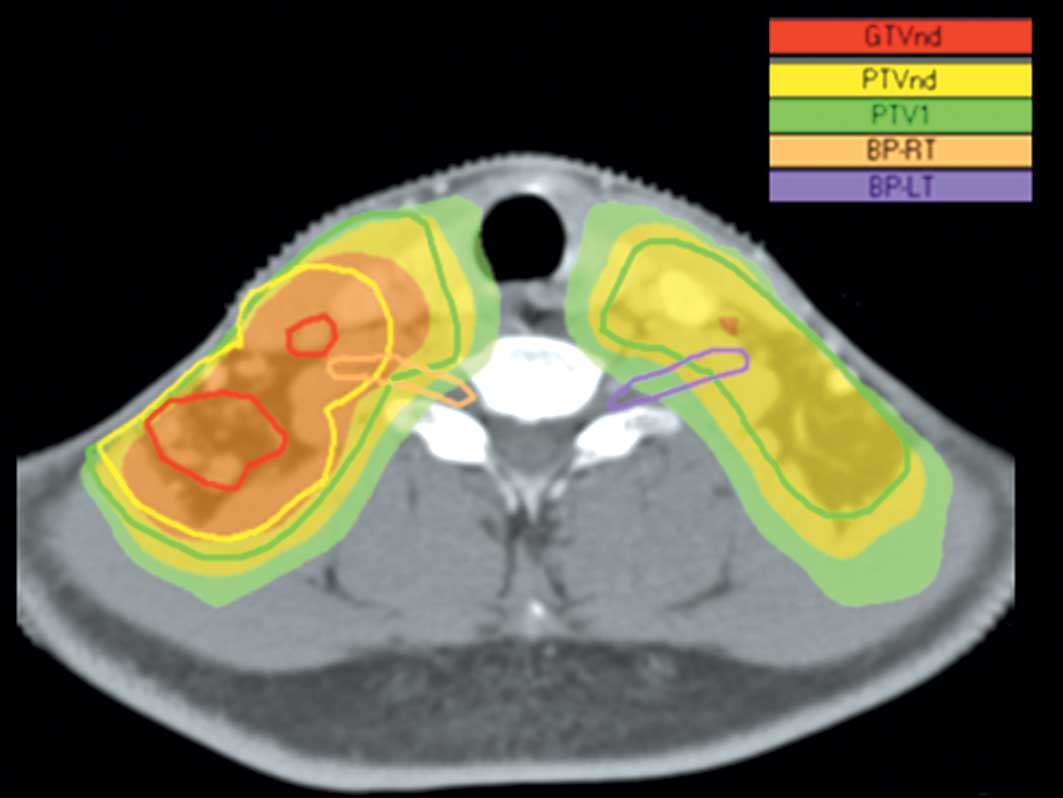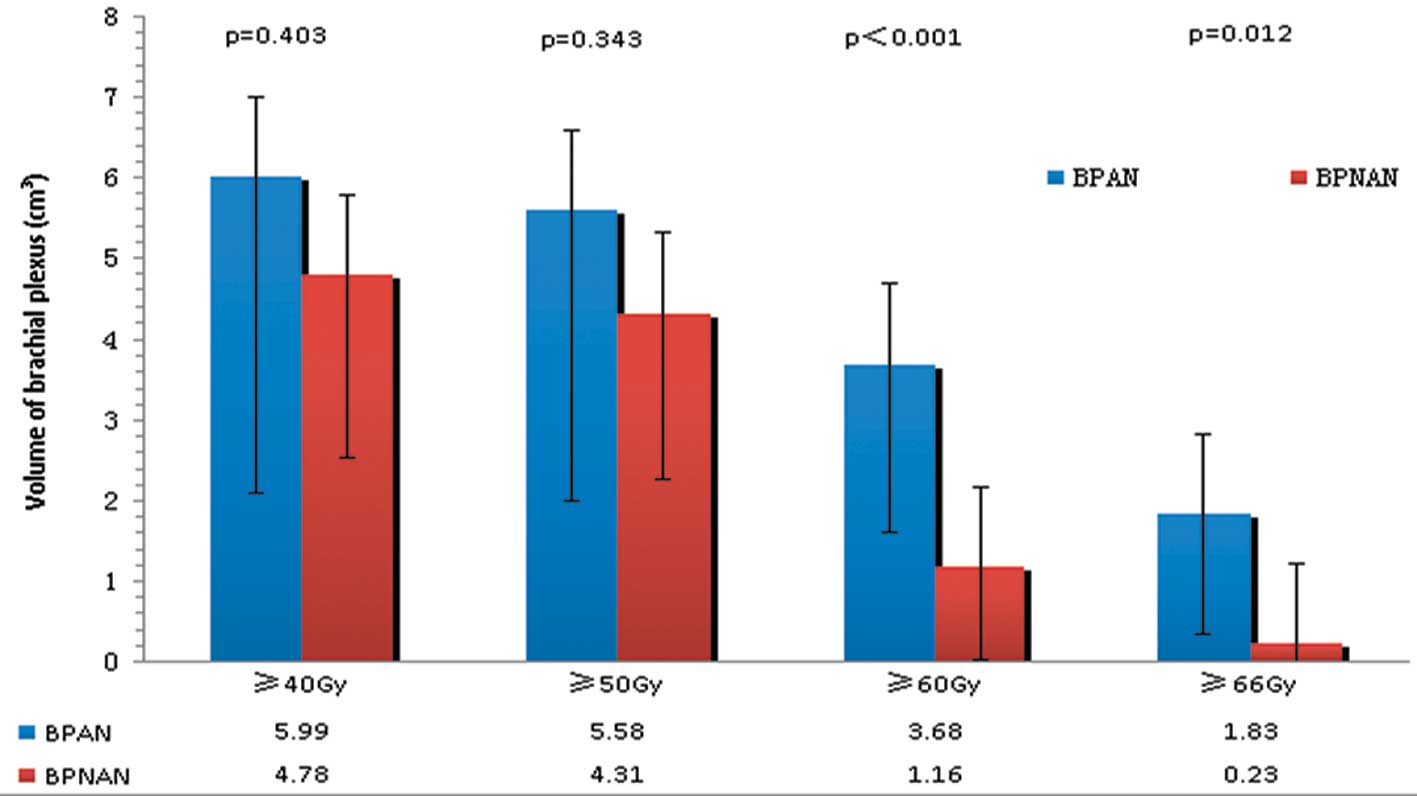Radiation dose to the brachial plexus in nasopharyngeal carcinoma treated with intensity-modulated radiation therapy: An increased risk of an excessive dose to the brachial plexus adjacent to gross nodal disease
- Authors:
- Published online on: May 28, 2012 https://doi.org/10.3892/etm.2012.592
- Pages: 216-220
Metrics: Total
Views: 0 (Spandidos Publications: | PMC Statistics: )
Total PDF Downloads: 0 (Spandidos Publications: | PMC Statistics: )
Abstract
This retrospective study aimed to evaluate the dose to the brachial plexus in patients with nasopharyngeal carcinoma (NPC) treated with intensity-modulated radiation therapy (IMRT). Twenty-eight patients were selected and the brachial plexus was delineated retrospectively. Brachial plexus adjacent/not adjacent to nodes were defined and abbreviated as BPAN and BPNAN, respectively. Dose distribution was recalculated and a dose-volume histogram was generated based on the original treatment plan. The maximum dose to the left brachial plexus was 59.12-78.47 Gy, and the percentage of patients receiving the maximum dose exceeding 60, 66 and 70 Gy was 96.4, 57.1 and 25.0%, respectively; the maximum dose to the right brachial plexus was 59.74-80.31 Gy, and the percentage of patients exposed to a maximum dose exceeding 60, 66 and 70 Gy was 96.4, 64.3 and 39.3%, respectively. For the left brachial plexus, the maximum doses to the BPANs and the BPNANs were 72.84±3.91 and 64.81±3.47 Gy, respectively (p<0.001). For the right brachial plexus, the maximum doses to the BPANs and the BPNANs were 72.91±4.74 and 64.91±3.52 Gy, respectively (p<0.001). The difference between the left BPANs and the left BPNANs was statistically significant not only for V60 (3.60 vs. 1.01 cm3, p=0.028) but also for V66 (1.26 vs. 0.11 cm3, p=0.046). There were significant differences in V60 (3.68 vs. 1.16 cm3, p<0.001) and V66 (1.83 vs. 1.23 cm3, p=0.012) between the right BPANs and the right BPNANs. In conclusion, a large proportion of patients were exposed to the maximum dose to the brachial plexus exceeding the Radiation Therapy Oncology Group-recommended restraints when the brachial plexus was not outlined. The BPANs are at a significantly higher risk of receiving an excessive radiation dose when compared to the BPNANs. A further study is underway to test whether brachial plexus contouring assists in the dose reduction to the brachial plexus for IMRT optimization.












